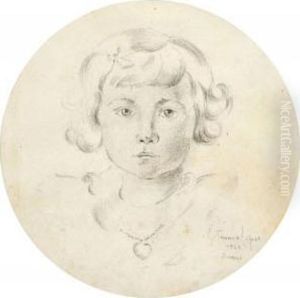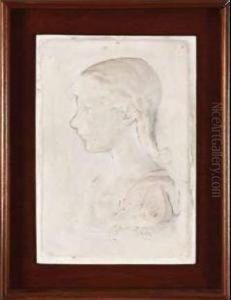Antonio Teixeira Lopes Paintings
Antonio Teixeira Lopes was a prominent Portuguese sculptor, born on October 18, 1866, in Vila Nova de Gaia, Portugal. He was the son of a sculptor, José Joaquim Teixeira Lopes, who was instrumental in his early education in the arts. His father's influence and the artistic environment in which he was raised played a significant role in shaping his future career.
Teixeira Lopes studied at the Porto Academy of Fine Arts, where he honed his sculpting skills and developed his artistic style. After completing his studies in Portugal, he moved to Paris, which was then the epicenter of the art world. In Paris, he continued his education at the École des Beaux-Arts, studying under renowned sculptors like Alexandre Falguière and Jules Cavelier. This exposure to the Parisian art scene deeply influenced his work, allowing him to blend traditional Portuguese styles with contemporary European trends.
Throughout his career, Teixeira Lopes became known for his mastery in sculpting marble and bronze. His works often reflected themes of religion, history, and mythology, and he was particularly adept at creating lifelike figures and emotive expressions. Some of his notable sculptures include 'O Desterrado' (The Exiled), 'A Viúva' (The Widow), and 'D. Pedro V'. He received several accolades for his work, including gold medals in exhibitions in Paris, Madrid, and St. Louis.
Teixeira Lopes was also a respected professor, teaching sculpture at the Porto Academy of Fine Arts, where he had once been a student. His influence extended beyond his own works, as he played a crucial role in nurturing a new generation of Portuguese artists.
The sculptor's legacy is preserved in the Museu Teixeira Lopes, which is located in his former residence and studio in Vila Nova de Gaia. The museum houses many of his sculptures, drawings, and documents, providing insight into his creative process and the cultural context of his time.
Antonio Teixeira Lopes passed away on June 21, 1942, leaving behind a rich body of work that continues to be celebrated in Portugal and beyond. His contributions to the field of sculpture and his impact on Portuguese art history remain significant, marking him as one of the leading artistic figures of his generation.

